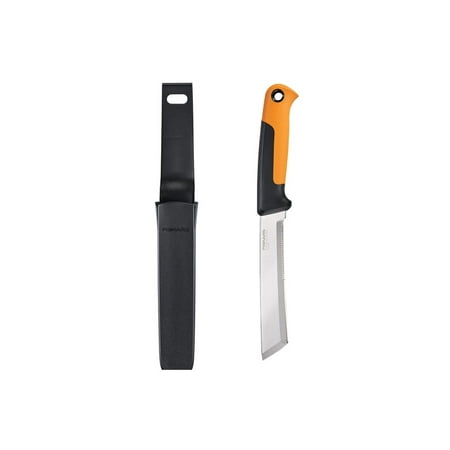When to harvest celeriac – enjoy sweeter roots by waiting until after the first frosts
Tips from a kitchen gardener on when and how to pick celeriac roots throughout the winter
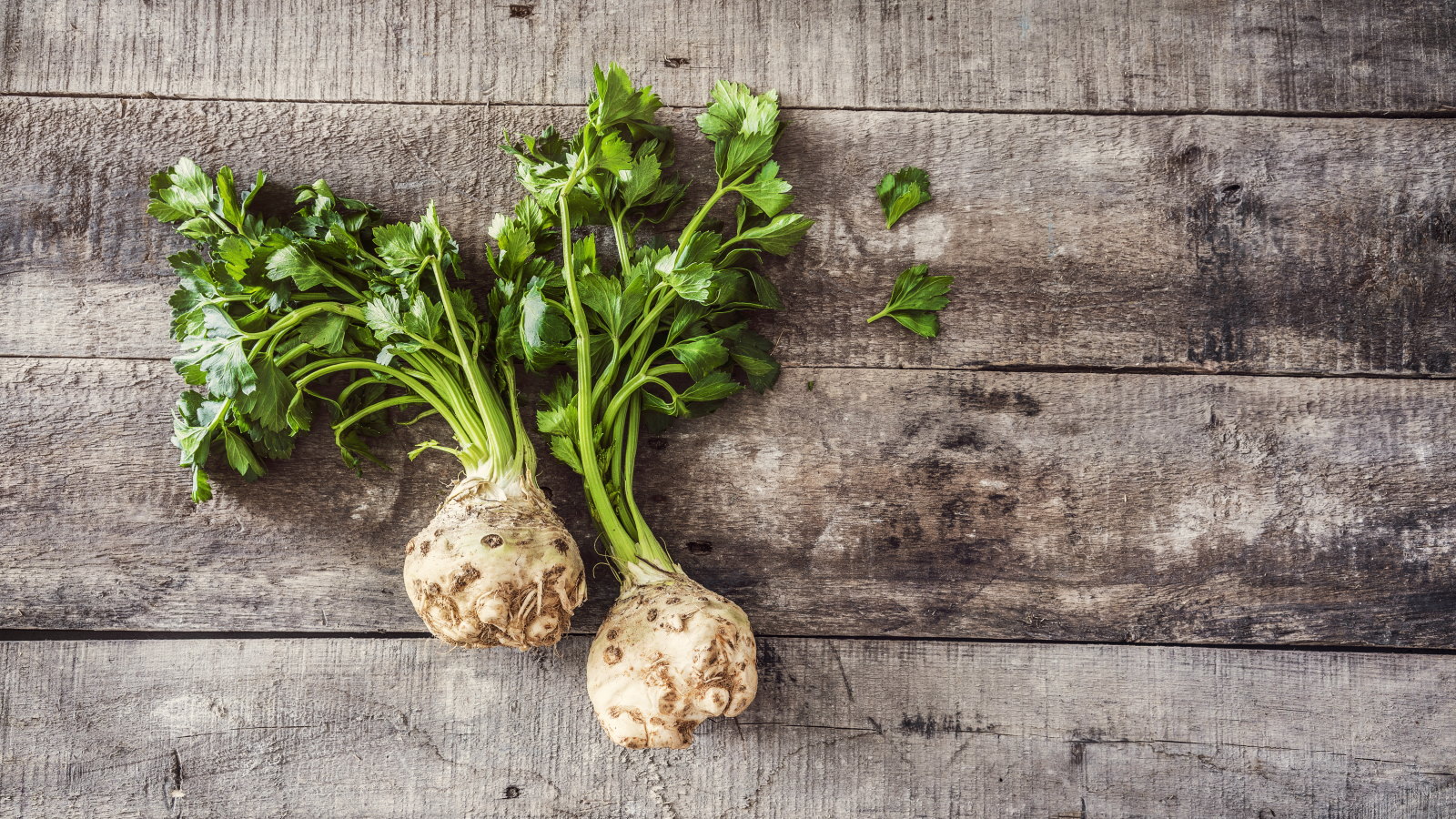

Celeriac is a cold-season vegetable that can be harvested over a long time, from fall to spring. Knowing the ideal time to start harvesting celeriac each year ensures you lift the sweetest and most flavorful roots.
As a cold hardy crop, celeriac can remain in the vegetable garden throughout winter to be harvested as needed. Harvesting celeriac was a common seasonal task in kitchen gardens I worked in over the years. Celeriac was grown and harvested for chefs each year as the crunchy, sweet and versatile roots were used in dishes throughout winter.
Growing celeriac is always enjoyable and I look forward to celeriac harvesting season each year. Here are my tips on when to harvest celeriac for the best roots and some recommendations for lifting the crop.
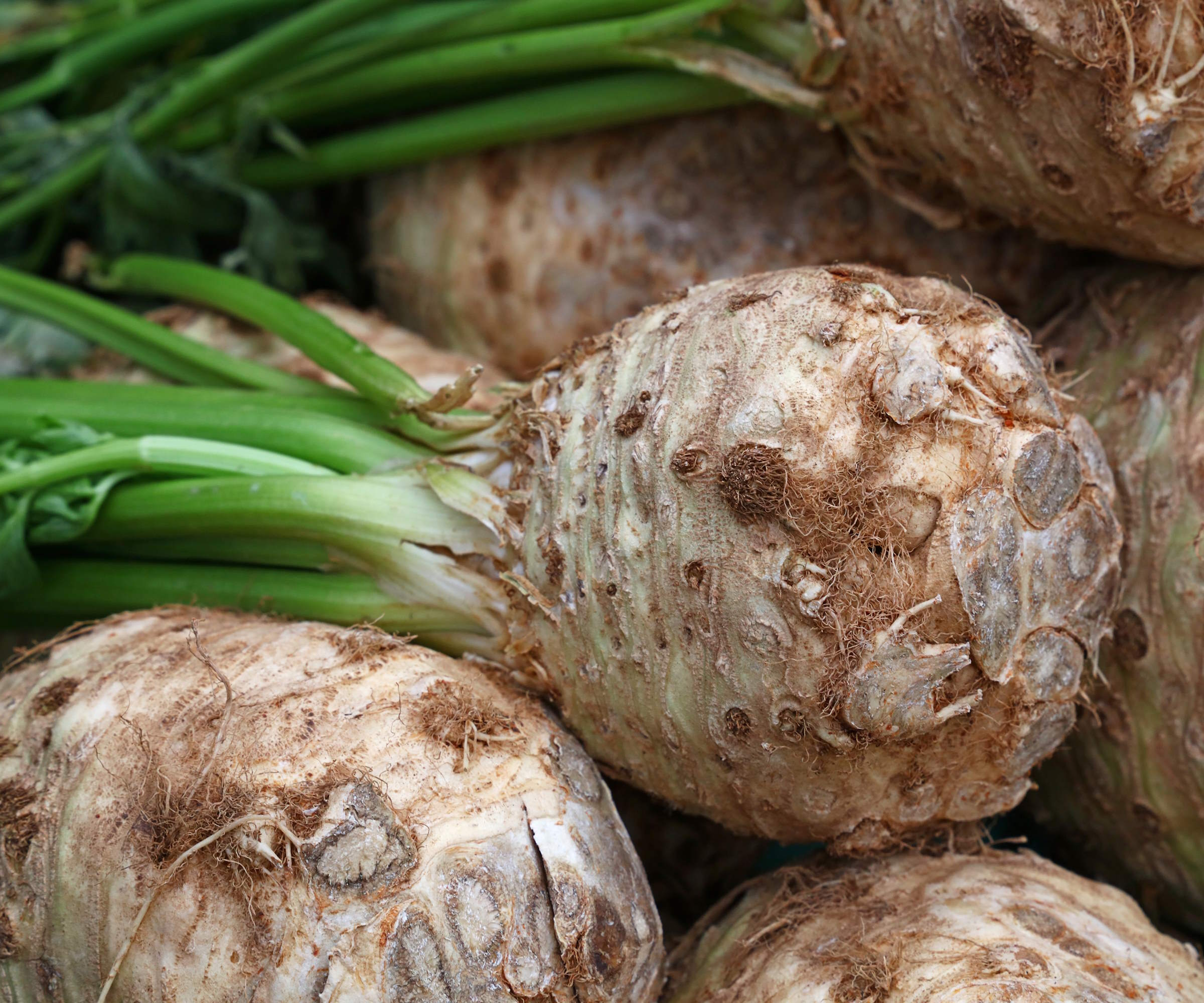
Harvest celeriac once the swollen roots reach a usable size
When is celeriac ready to harvest?
Celeriac is commonly sown in the spring. It is a crop with a long growing season, usually taking 100-130 days from starting the vegetable seeds to being ready for harvest. So what are the signs to look for to know it is celeriac harvest time and how should you lift the roots?
When to harvest celeriac
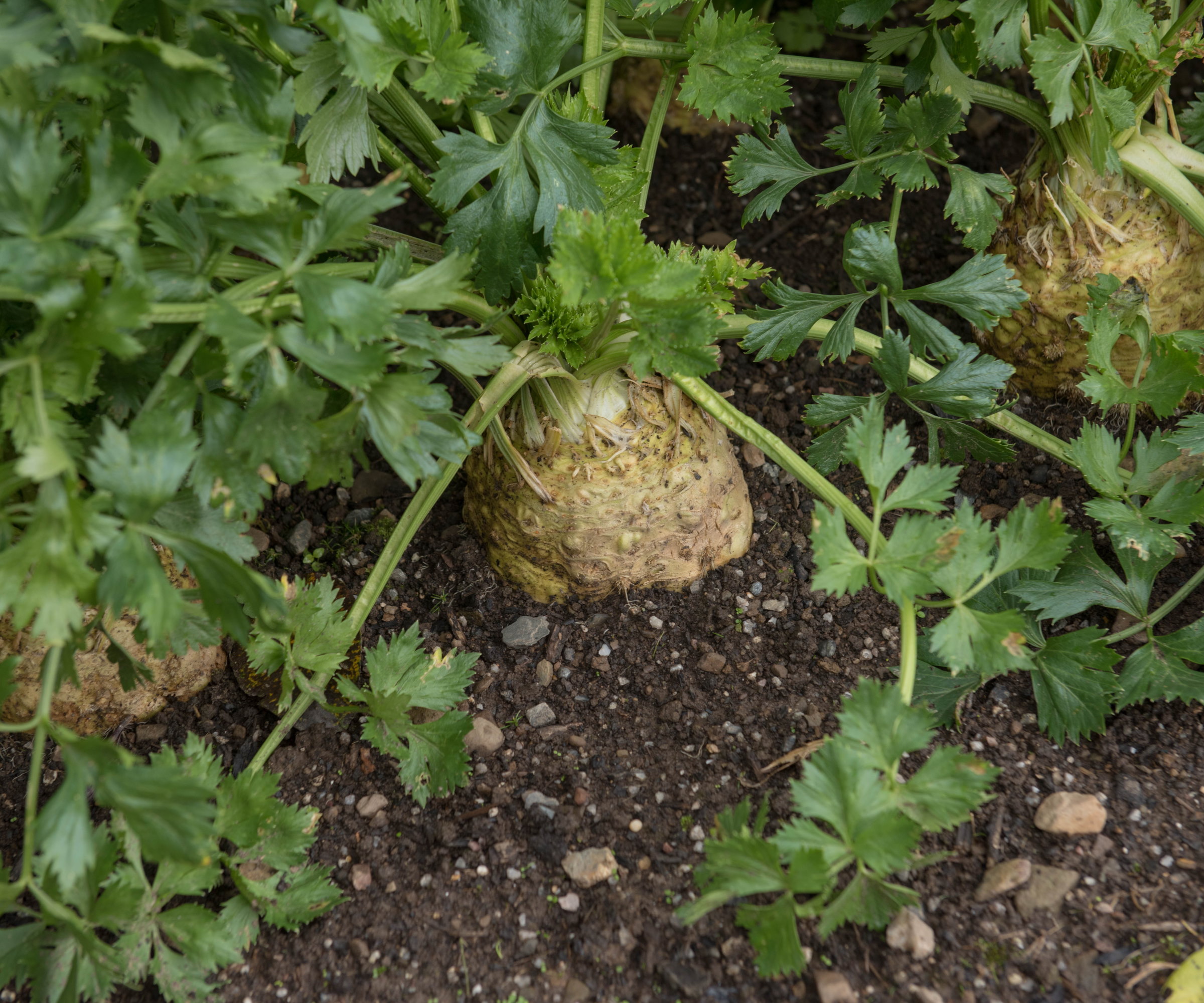
Harvesting celeriac is a winter vegetable garden task
The days to maturity will alter depending on the variety of celeriac you are growing, so refer to the seed packet for specific guidelines. However, as mentioned above, celeriac is not a fast-growing vegetable and you do need to wait to start harvesting.
Celeriac that is sown early in the season - the earliest you can go is to sow seeds indoors and plant the vegetable in February - will be ready to harvest from September onwards. The time to start harvesting celeriac is once the swollen root reaches at least three inches across.
I always remove the older, outer leaves as the celeriac grows. These leaves often fall to the floor and can attract pests and diseases. Removing them reduces these risks, focuses the energy on developing the root, and makes it easier to tell when the celeriac has reached a good size to start harvesting.
Design expertise in your inbox – from inspiring decorating ideas and beautiful celebrity homes to practical gardening advice and shopping round-ups.
Celeriac is known for having a sweet and nutty taste. Though the roots can be ready to harvest from early fall onwards, leaving them for longer will improve the flavor. Frosts convert the starches in the roots into sugars, making them taste sweeter. I would recommend waiting until after the first few frosts to start harvesting celeriac, it takes a bit more patience but the extra sweetness more than makes up for it.
Celeriac is a hardy vegetable to overwinter in a kitchen garden. If you have very cold winters, mulching around plants with straw can protect the ground from frost and make harvesting easier.
If you have wet winters and heavy soil, it may be beneficial to lift the entire crop in fall or early winter and store the roots in boxes of sand in a root cellar or basement over the colder months.
How to harvest celeriac
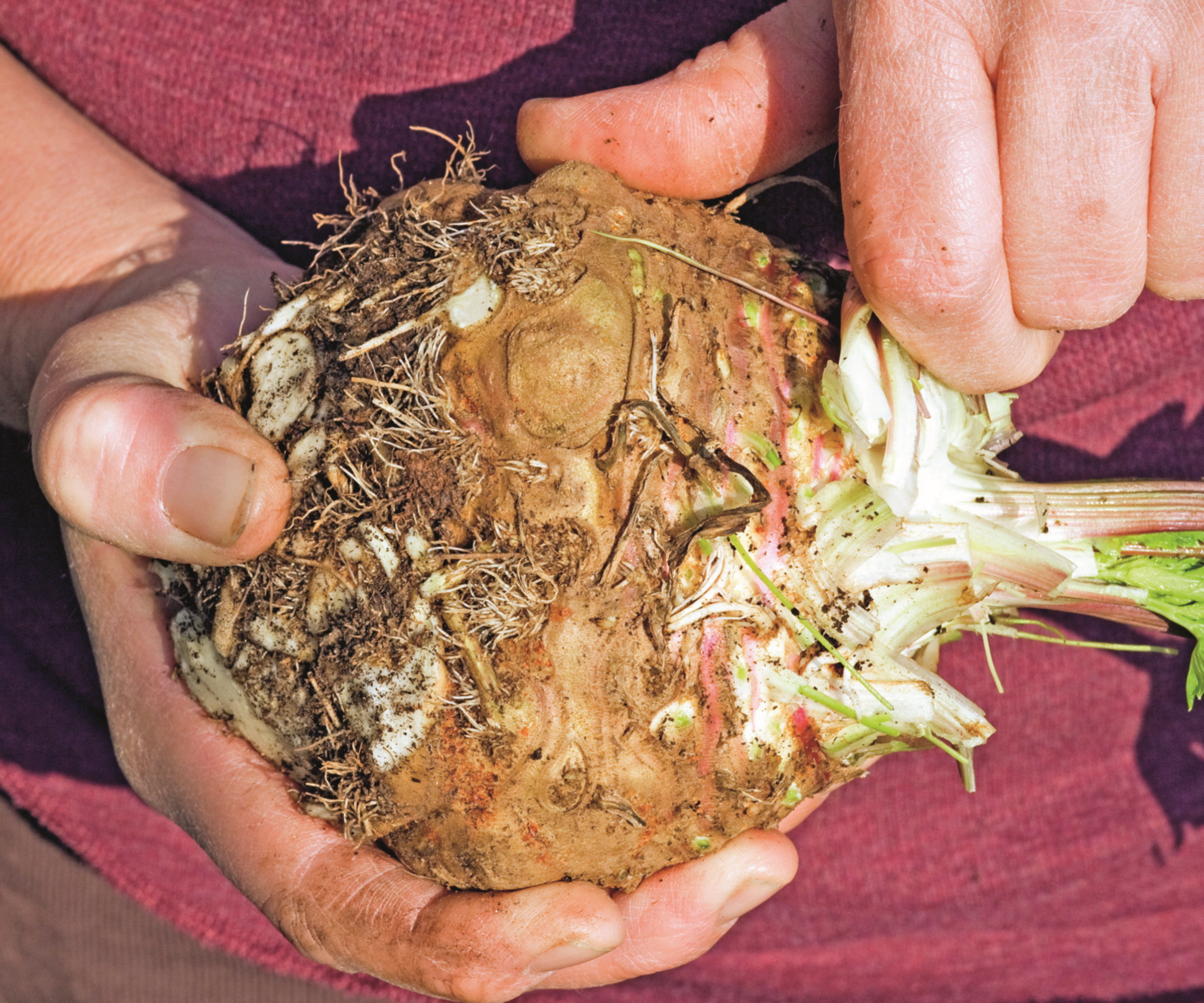
Celeriac needs careful trimming after harvesting
The good news is that harvesting celeriac is a simple task. It can be done by hand, however, I always prefer to use garden tools, such as a garden fork, available at Amazon, or trowel. Not only does it make harvesting easier, but it also reduces the risk of damaging the edible roots.
Take your chosen tool and insert it into the ground by the side of the celeriac, then gently lever the celeriac out of the ground. Being careful is advisable as yanking the plants by the stems would be a vegetable harvesting mistake that not just risks blemishing the roots but also the edible leaves that can be used as a garnish.
Use a sharp garden knife or pruning shears to remove the small roots from around the base before storing the celeriac. Do not wash the celeriac root until you plan to use it, as washing beforehand will reduce the shelf life. Celeriac can be stored in a refrigerator’s vegetable drawer for up to two weeks.
FAQs
How long can you leave celeriac in the ground?
Celeriac is a very cold-hardy crop that can remain in the soil throughout winter and be lifted as and when required for meals throughout the colder months. As a biennial plant, celeriac will start to flower and go to seed if left in the ground long enough to start growing again when temperatures rise in the spring.
Celeriac is closely related to celery. It is also sometimes called celery root and the flavors are similar, however, the texture is very different and the two are not interchangeable in recipes.
You can grow celery from seed in a vegetable garden. Sow celery seeds in spring and then plant the crop in a sunny spot, ensuring that celery is well-watered throughout the growing season.
The alternative is to grow celery from a stalk, where you re-sprout the base of homegrown or store-bought celery in water. The base develops roots and can be planted into the garden, or in a pot, to produce new stems.

Drew has worked as a writer since 2008 and was also a professional gardener for many years. As a trained horticulturist, he worked in prestigious historic gardens, including Hanbury Hall and the world-famous Hidcote Manor Garden. He also spent time as a specialist kitchen gardener at Soho Farmhouse and Netherby Hall, where he grew vegetables, fruit, herbs, and cut flowers for restaurants. Drew has written for numerous print and online publications and is an allotment holder and garden blogger. He is shortlisted for the Digital Gardening Writer of the Year at the 2025 Garden Media Guild Awards.
